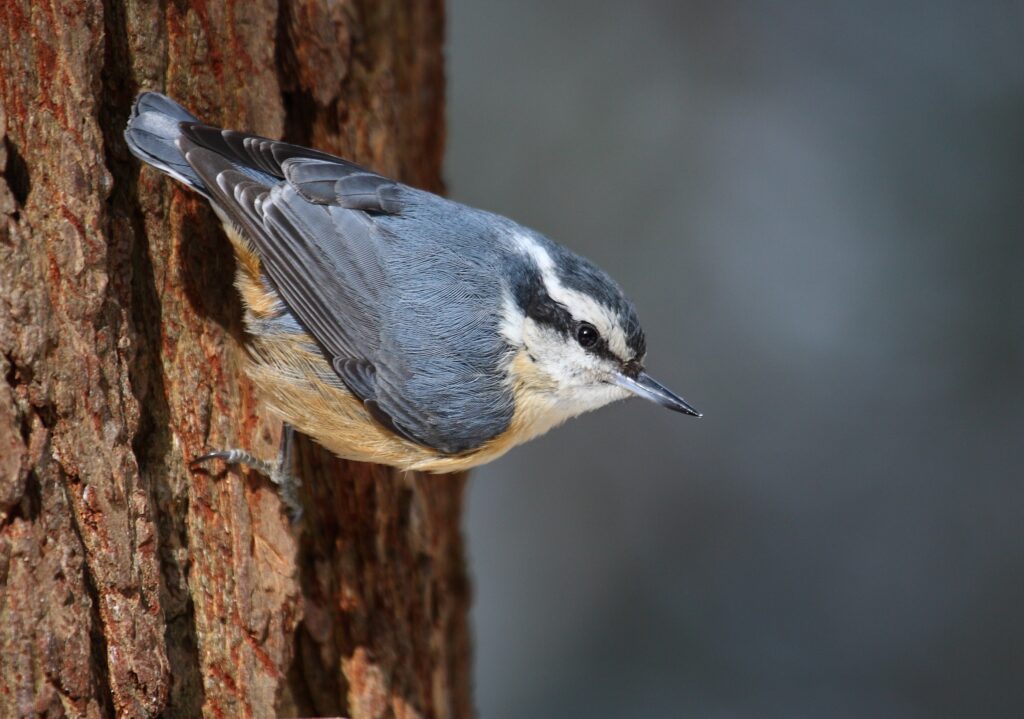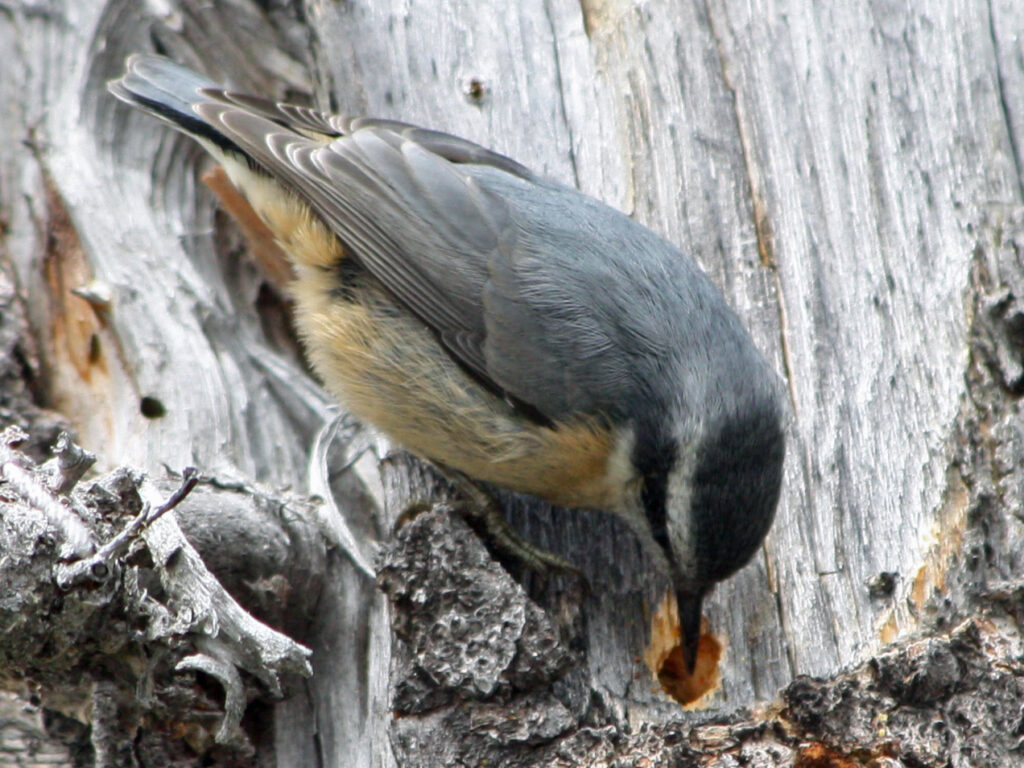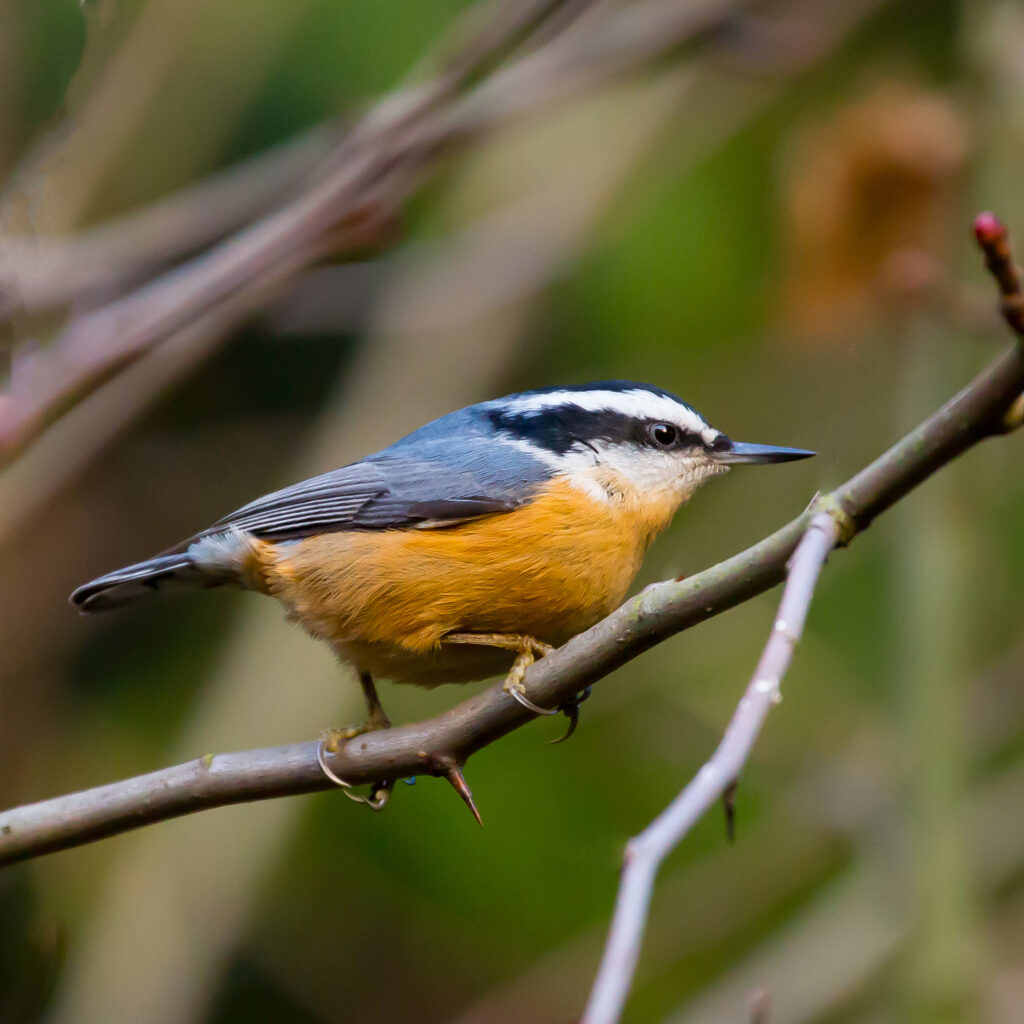An Acrobatic Charmer With a Tiny But Mighty Beak

Photo by Cephas – Own work, CC BY-SA 3.0, https://commons.wikimedia.org/w/index.php?curid=9645313
The red-breasted nuthatch (Sitta canadensis) — a charismatic and distinctive bird species found across North America — is known for its colorful plumage, unique vocalizations and fascinating behavior. It’s a favorite among birdwatchers and nature enthusiasts, and was a favorite and frequent visitor to my family’s bird feeders when I was a child growing up in northern Wisconsin. Let’s take a closer look.
Where in the World?
The red-breasted nuthatch is one of four distinct species of nuthatch in North America. It can be found in much of the U.S and Canada and occasionally makes an appearance in Mexico. Its breeding range covers much of the northern U.S., southern Canada and most of the Rocky Mountains. This irruptive migrator may stay in the more northerly parts of its range or may head south for the winter, mostly depending on food availability.
How Do They Look?
One of the most striking features of the red-breasted nuthatch is its appearance. This bird is easily recognizable by its striking coloration, with a rose-pink breast and belly contrasting against its slate-blue back and wings. The male sports a more vibrant rose hue on its underparts compared to the female, whose coloring tends to be paler. In addition, both genders display a black cap on their heads which extends down the back of their neck.

Photo by Walter Siegmund – Own work, CC BY-SA 3.0,
https://commons.wikimedia.org/w/index.php?curid=4626796
Where to Find Them
Habitat-wise, the red-breasted nuthatch is primarily found in coniferous and mixed forests throughout its range. It prefers mature forests with ample tree cavities for nesting and foraging. These birds are adept climbers, using their strong feet and sharp claws to maneuver along tree trunks and branches with ease. They are often seen spiraling down tree trunks headfirst, a behavior unique to nuthatches that sets them apart from all other bird species.
What Do They Eat?
In terms of diet, red-breasted nuthatches are primarily insectivorous but also consume seeds and nuts. Their diet includes a variety of insects such as beetles, caterpillars, ants, and spiders, which they glean from tree bark and foliage. During winter months when insect availability decreases, they rely more heavily on seeds and nuts, storing food in crevices of tree bark for later consumption.

https://commons.wikimedia.org/w/index.php?curid=30537522
What Do They Sound Like?
The vocalizations of the red-breasted nuthatch are a distinctive nasal call that sounds like “yank, yank,” often repeated in rapid succession. This call is used for communication between individuals and serves as a territorial marker during breeding season. In addition, they produce a soft, muffled drumming sound by tapping on tree bark with their bill, which is believed to be a courtship behavior.
Family Time
Breeding season for red-breasted nuthatches typically begins in late spring to early summer. They are monogamous birds, forming strong pair bonds that last throughout the breeding season and sometimes beyond. The female builds the nest, usually in a natural cavity or old woodpecker hole, using materials such as bark strips, grasses, and feathers. She lays a clutch of 5-6 eggs, which are incubated by both parents for about two weeks until they hatch. The young nuthatches fledge after another two weeks and are cared for by the parents until they become independent.
* * * * * * * * * * *
So there you have it. The red-breasted nuthatch is a delightful avian species with vibrant plumage, agile climbing abilities, unique vocalizations and interesting behaviors. Its presence adds color and liveliness to North America’s forests, making it a cherished sight for birdwatchers and a valuable component of our natural ecosystems.
By Steven Roberts



